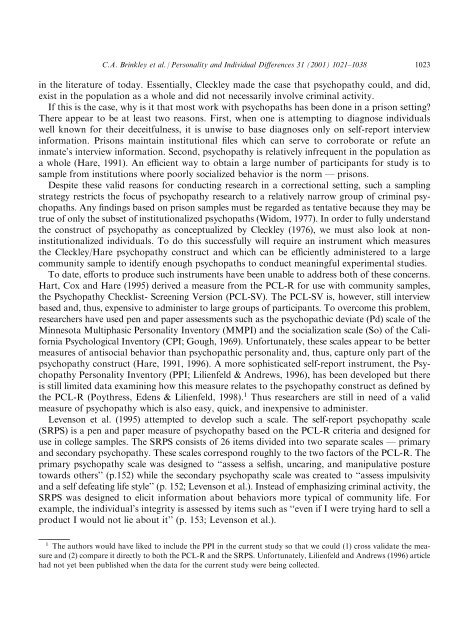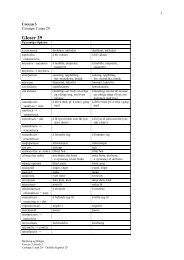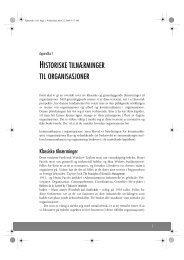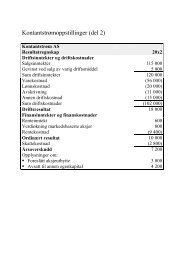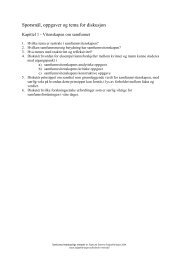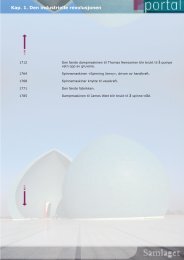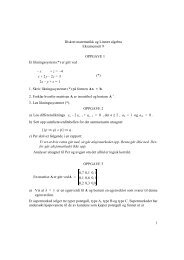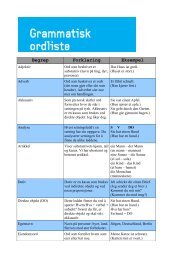Construct validation of a self-report psychopathy ... - Fagbokforlaget
Construct validation of a self-report psychopathy ... - Fagbokforlaget
Construct validation of a self-report psychopathy ... - Fagbokforlaget
Create successful ePaper yourself
Turn your PDF publications into a flip-book with our unique Google optimized e-Paper software.
C.A. Brinkley et al. / Personality and Individual Di€erences 31 2001) 1021±1038 1023<br />
in the literature <strong>of</strong> today. Essentially, Cleckley made the case that <strong>psychopathy</strong> could, and did,<br />
exist in the population as a whole and did not necessarily involve criminal activity.<br />
If this is the case, why is it that most work with psychopaths has been done in a prison setting?<br />
There appear to be at least two reasons. First, when one is attempting to diagnose individuals<br />
well known for their deceitfulness, it is unwise to base diagnoses only on <strong>self</strong>-<strong>report</strong> interview<br />
information. Prisons maintain institutional ®les which can serve to corroborate or refute an<br />
inmate's interview information. Second, <strong>psychopathy</strong> is relatively infrequent in the population as<br />
a whole Hare, 1991). An e cient way to obtain a large number <strong>of</strong> participants for study is to<br />
sample from institutions where poorly socialized behavior is the norm Ð prisons.<br />
Despite these valid reasons for conducting research in a correctional setting, such a sampling<br />
strategy restricts the focus <strong>of</strong> <strong>psychopathy</strong> research to a relatively narrow group <strong>of</strong> criminal psychopaths.<br />
Any ®ndings based on prison samples must be regarded as tentative because they may be<br />
true <strong>of</strong> only the subset <strong>of</strong> institutionalized psychopaths Widom, 1977). In order to fully understand<br />
the construct <strong>of</strong> <strong>psychopathy</strong> as conceptualized by Cleckley 1976), we must also look at noninstitutionalized<br />
individuals. To do this successfully will require an instrument which measures<br />
the Cleckley/Hare <strong>psychopathy</strong> construct and which can be e ciently administered to a large<br />
community sample to identify enough psychopaths to conduct meaningful experimental studies.<br />
To date, e€orts to produce such instruments have been unable to address both <strong>of</strong> these concerns.<br />
Hart, Cox and Hare 1995) derived a measure from the PCL-R for use with community samples,<br />
the Psychopathy Checklist- Screening Version PCL-SV). The PCL-SV is, however, still interview<br />
based and, thus, expensive to administer to large groups <strong>of</strong> participants. To overcome this problem,<br />
researchers have used pen and paper assessments such as the psychopathic deviate Pd) scale <strong>of</strong> the<br />
Minnesota Multiphasic Personality Inventory MMPI) and the socialization scale So) <strong>of</strong> the California<br />
Psychological Inventory CPI; Gough, 1969). Unfortunately, these scales appear to be better<br />
measures <strong>of</strong> antisocial behavior than psychopathic personality and, thus, capture only part <strong>of</strong> the<br />
<strong>psychopathy</strong> construct Hare, 1991, 1996). A more sophisticated <strong>self</strong>-<strong>report</strong> instrument, the Psychopathy<br />
Personality Inventory PPI; Lilienfeld & Andrews, 1996), has been developed but there<br />
is still limited data examining how this measure relates to the <strong>psychopathy</strong> construct as de®ned by<br />
the PCL-R Poythress, Edens & Lilienfeld, 1998). 1 Thus researchers are still in need <strong>of</strong> a valid<br />
measure <strong>of</strong> <strong>psychopathy</strong> which is also easy, quick, and inexpensive to administer.<br />
Levenson et al. 1995) attempted to develop such a scale. The <strong>self</strong>-<strong>report</strong> <strong>psychopathy</strong> scale<br />
SRPS) is a pen and paper measure <strong>of</strong> <strong>psychopathy</strong> based on the PCL-R criteria and designed for<br />
use in college samples. The SRPS consists <strong>of</strong> 26 items divided into two separate scales Ð primary<br />
and secondary <strong>psychopathy</strong>. These scales correspond roughly to the two factors <strong>of</strong> the PCL-R. The<br />
primary <strong>psychopathy</strong> scale was designed to ``assess a sel®sh, uncaring, and manipulative posture<br />
towards others'' p.152) while the secondary <strong>psychopathy</strong> scale was created to ``assess impulsivity<br />
and a <strong>self</strong> defeating life style'' p. 152; Levenson et al.). Instead <strong>of</strong> emphasizing criminal activity, the<br />
SRPS was designed to elicit information about behaviors more typical <strong>of</strong> community life. For<br />
example, the individual's integrity is assessed by items such as ``even if I were trying hard to sell a<br />
product I would not lie about it'' p. 153; Levenson et al.).<br />
1 The authors would have liked to include the PPI in the current study so that we could 1) cross validate the measure<br />
and 2) compare it directly to both the PCL-R and the SRPS. Unfortunately, Lilienfeld and Andrews 1996) article<br />
had not yet been published when the data for the current study were being collected.


